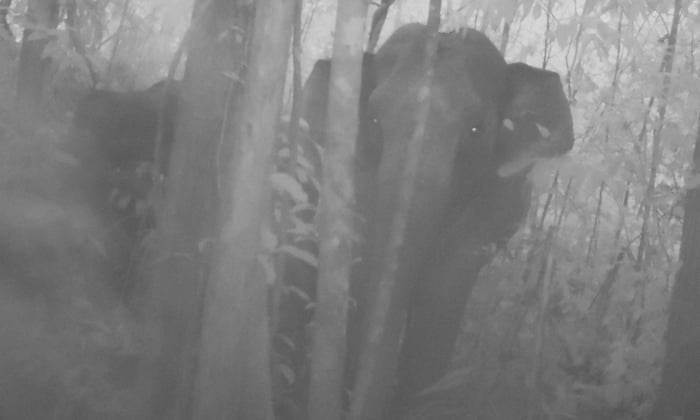 |
Rare footage of an elephant herd roaming through Cambodia’s biggest forest sanctuary.
Photograph: Conservation International/AFP/Getty Images
|
Footage of elephants in Cambodia raises hopes for Asian species in the wild
A camera trap captured pictures of a herd roaming through the remote
Cardamom mountains, spelling success for 14-year conservation effort
The Guardian | 15 January 2016
Rare footage of an elephant herd roaming through Cambodia’s biggest
forest sanctuary has signalled the success of a 14-year conservation
programme and raised hopes for the endangered species’ survival.
The camera trap footage, taken in the spectacular and remote Cardamom
mountains, shows 12 elephants, including young, grazing and lumbering
through the forest.
Conservation
International released the footage on Friday as it launched a trust
fund that aims to secure long-term funding for the scheme in one of
south-east Asia’s most biodiverse areas.
“That several young are here indicates that the elephants are
reproducing, which we think is a good sign that their environment is
stable and they are not under stress,” said David Emmett, CI senior vice
president for the Asia-Pacific.
Emmett said the footage, taken a few months ago, was the first time
so many elephants had been captured on film in the Cardamoms, which is
home to about one third of Cambodia’s endangered and rare species.
The Cambodian government established a protected forest in the
Cardamoms with the support of CI in 2002, covering roughly 400,000
hectares (one million acres) of pristine land in the remote south-west
of the country.
While vast areas of forest have since been illegally logged in Cambodia and elsewhere in the region since then, the conservation efforts in the Cardamoms have been regarded as a success.
Forests
in the protected area declined by 2% between 2006 and 2012, compared
with 15% in areas immediately outside it, according to CI, citing an
independent study.
Although there were no more recent specific surveys, Emmett said
satellite images showed the area was still not experiencing the
widespread destruction seen elsewhere.
Asked if illegal logging could be taking place without CI’s
knowledge, Emmett emphasised the evidence of the satellite imagery as
well the fact that 90% of the area has no road access.
“Illegal logging at any significant scale requires road access into the forest for logs to be taken out,” Emmett said.
There are believed to only be about 200-250 elephants in the
Cardamoms, with another population of similar size in eastern Cambodia,
according to CI.
However these are still some of the largest remaining wild
populations for the endangered Asian elephant, which once roamed from
the Middle East across to China and into south-east Asia.
The new trust fund for the protected to be launched in Phnom Penh by
CI has initial funding of $2.5m from CI’s global conservation fund and
the Japanese air conditioning firm, Daikin.
CI is aiming to secure another $7.5m for the fund from developed nations and the corporate sector.
It says this would guarantee funding for the protection work – such
as paying for rangers and community engagement – in perpetuity.


No comments:
Post a Comment